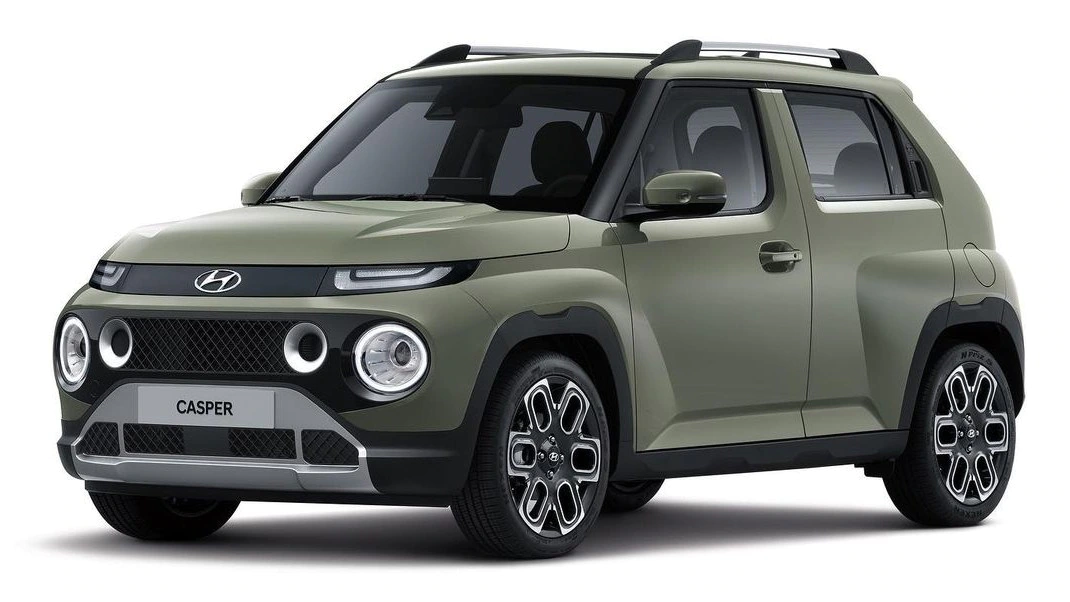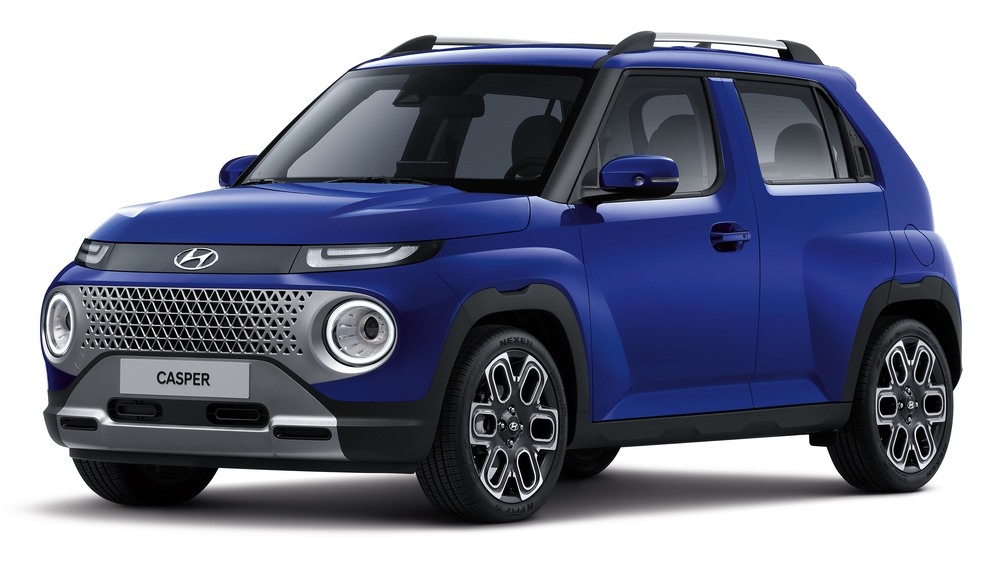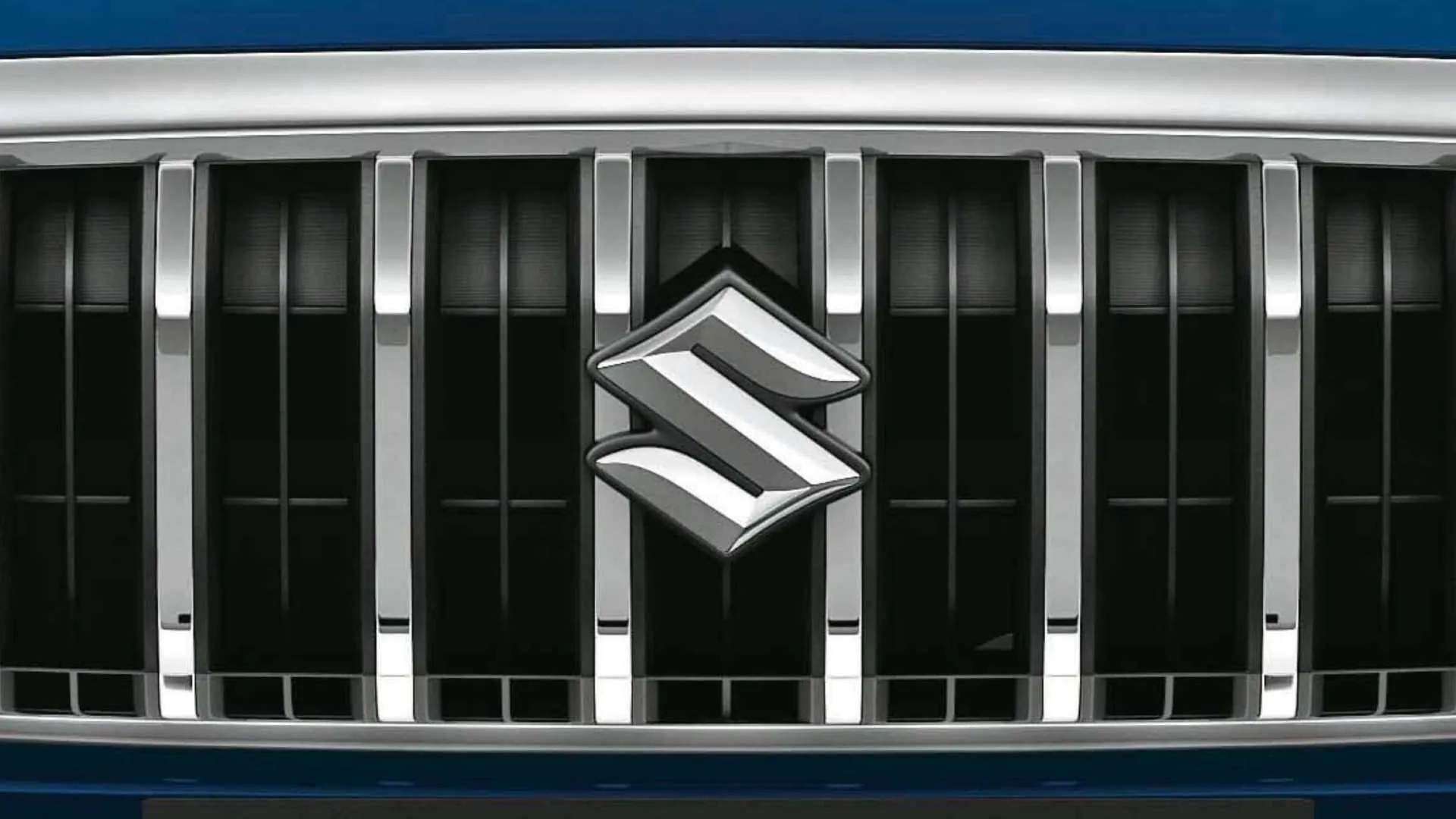tech2 News StaffSep 01, 2021 09:13:38 IST
Hyundai has taken the wraps off of its smallest SUV yet – it’s named the Hyundai Casper, a mini-SUV that is set to make its way to India in the coming months. The Casper – named after the freestyle skateboarding trick invented by Bobby ‘Casper’ Boyden in the 1970s, and not the friendly ghost – is unique in the way that it’s not only the smallest SUV Hyundai has made till date, but also one of its most compact passenger vehicles for global markets. Let’s take a closer look at some of the key details of the Casper.
#Hyundai #CASPER, exterior design revealed for the first time. #HyundaiCASPER #SUV #Car #CarDesign #NewCar #Automobile #CarPhotography pic.twitter.com/OPBVprCt3M
— Hyundai Motor Group (@HMGnewsroom) September 1, 2021
Hyundai Casper design and dimensions
At 3,595 mm in length, 1,595 mm in width and 1,575 mm in height, the Hyundai Casper – based on the K1 compact car platform that also underpins the Hyundai Santro and Grand i10 Nios – is shorter and narrower than the aforementioned hatchbacks, but is taller, with a 2,400 mm wheelbase. Meant to slot in below the Hyundai Venue, the Casper (codenamed AX1) has enough design and styling cues to firmly establish that it’s a Hyundai, but also features a number of elements that will grab attention.
The Casper’s silhouette is boxy, but with the face, Hyundai has mixed things up by adding slim LED lights up top, while the round headlights with LED DRL rings sit below them, sunken into the front bumper. The ‘parametric design’ radiator grille section is finished in silver, and there’s a faux skid plate, too.
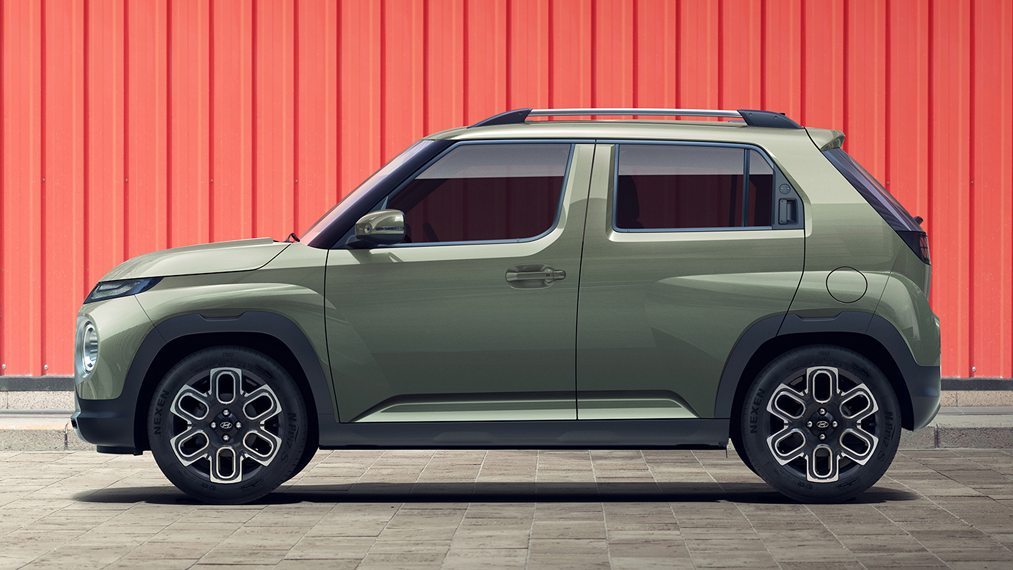
Heavily flared wheel arches and different-sized window housings add character to the Casper. Image: Hyundai
Along the sides, you’ll notice the Casper gets blacked-out A-pillars, roof rails, body cladding, heavily flared and squared-off wheel arches, dual-tone alloys, rear door handles neatly hidden close to the C-pillar and different-sized window housings, to add some character.
At the back, the upper half of the hatch is finished in black, incorporating the ‘parametric jewel’ type LED lights, and the circular tail-lights are incorporated low in the rear bumper, to match the positioning of the headlights. Hyundai also provided a glimpse of an entry-level model that misses out on the roof rails, blacked-out A-pillars and only has plain halogen headlights.
Hyundai Casper interior and features
While Hyundai has refrained from sharing images of the Casper’s interior at this point, one of the images confirms the mini-SUV will have a free-standing touchscreen infotainment system, likely with a host of connected car features. It will also become one of the smallest passenger vehicles to be available with a standard-size sunroof.

A closer look confirms the Casper will have a free-standing touchscreen infotainment system; don’t miss the sunroof! Image: Hyundai
However, considering the Casper is considerably smaller than the Hyundai Venue – which itself isn’t exactly spacious – it is likely to have just about enough room for four passengers. Given how close the rear seats appear to the hatch in one picture, boot space is likely to be tight, too. More details on the Casper’s interior and features are expected later this month.
Hyundai Casper engine and gearbox options
In its home market, the Hyundai Casper will be offered with two engine options – a 1.0-litre, naturally-aspirated MPI unit making 76 hp, and a 1.0-litre T-GDI turbo-petrol unit (the same as in the Hyundai Venue) producing 100 hp. The turbo-petrol version distinguishes itself on the outside with circular intercooler intakes incorporated into the face, and a different skid plate design. Both engines will be available with a four-speed automatic transmission in South Korea. An all-electric version of the Casper is said to be in the works, too.
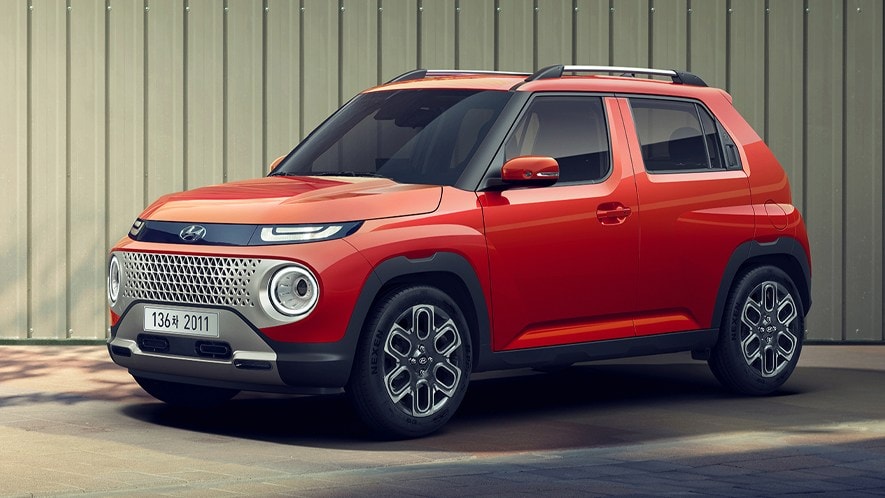
In India, the Casper is set to be offered with a choice of manual and automatic transmissions. Image: Hyundai
For India, Hyundai could end up using either the Santro’s 1.1-litre petrol engine, or the Grand i10 Nios’ 1.2-litre unit. It will be interesting to see if Hyundai chooses to go with the 1.0-litre turbo-petrol engine for the Indian market as an option for higher-spec trims of the Casper, seeing as how the company has strived to democratise turbocharged engines by adding them to other mass-market models including the Grand i10 Nios, Aura and Venue. Expect to see a manual gearbox as standard with the India-spec Casper, along with an automatic transmission option.
Hyundai Casper expected launch, price and rivals
The Hyundai Casper will go into production in South Korea on 15 September, following which it will go on sale in its home market. It’s expected to be introduced in India shortly after that, as ours will be among the first markets for the Casper’s introduction, and India could also be the hub for certain export markets for the Casper.
Action is set to intensify in the mini-SUV space, with the Tata Punch set to beat the Casper to the punch (pun intended) in India. Tata Motors’ mini-SUV is expected to go on sale in the coming weeks, and the Casper is likely to follow soon after, with prices expected to be in the range of Rs 5 – 7.5 lakh (ex-showroom). The Hyundai Casper will primarily rival the Tata Punch, and to some extent, models such as the Renault Kwid, Maruti Suzuki S-Presso, Maruti Suzuki Ignis and the Mahindra KUV100.

